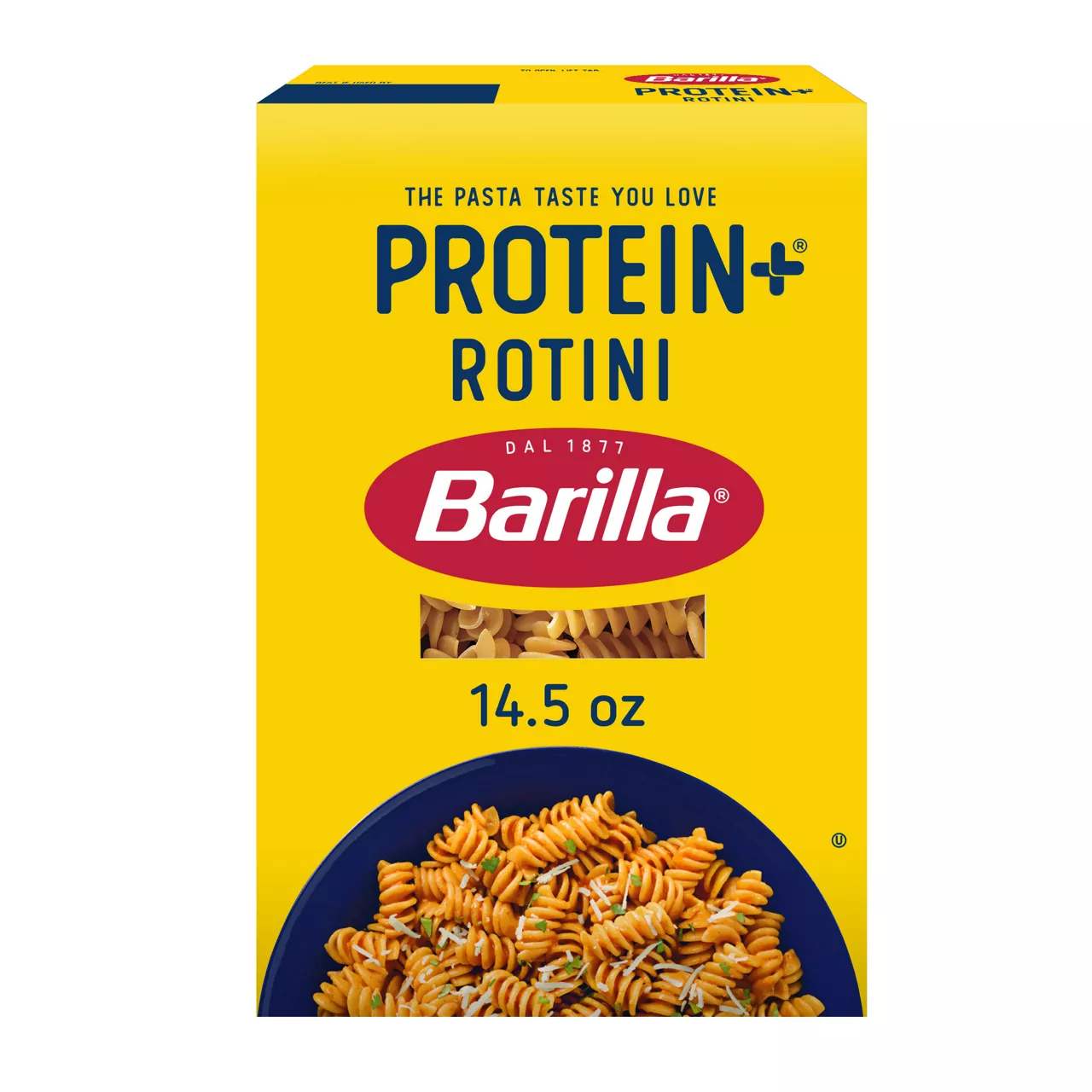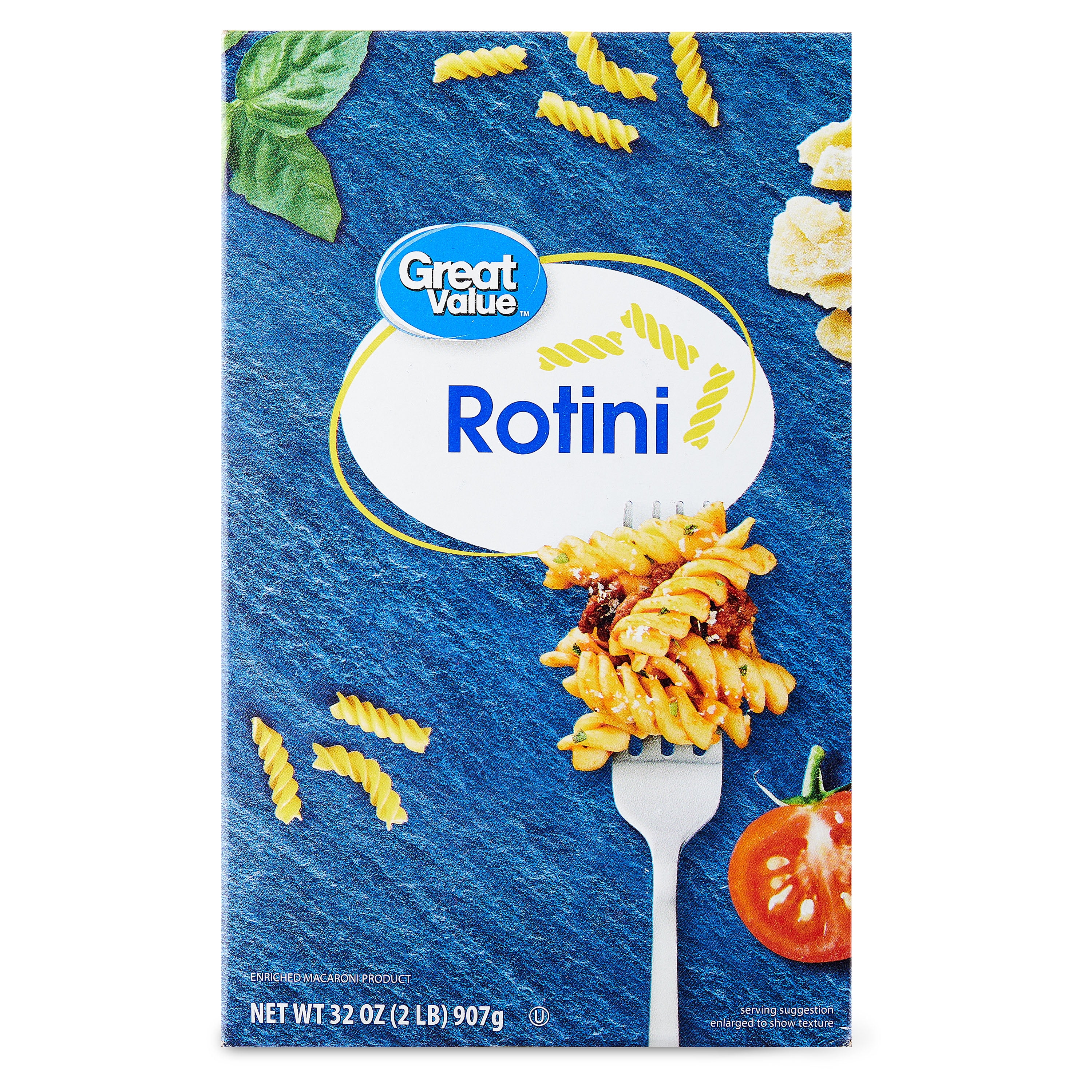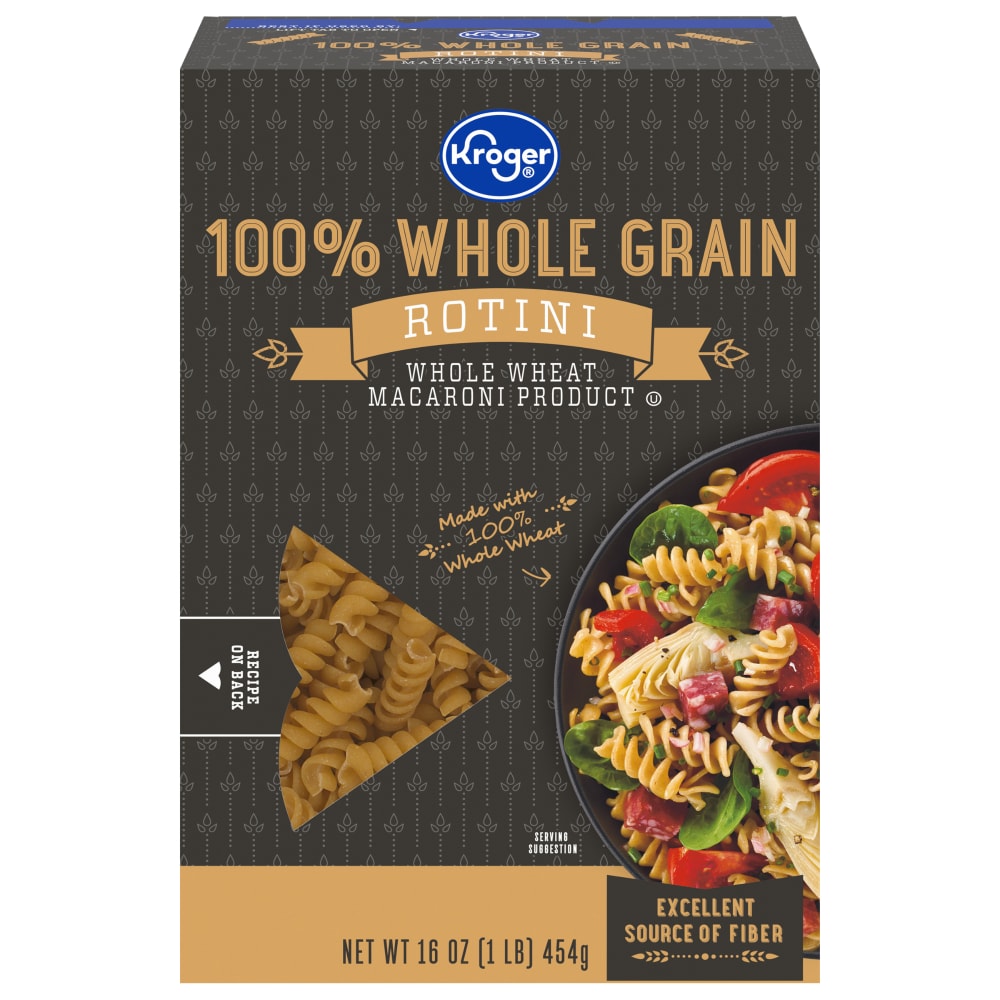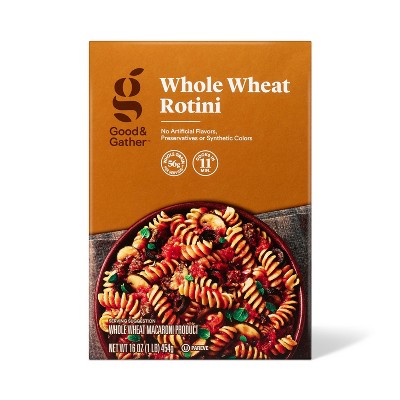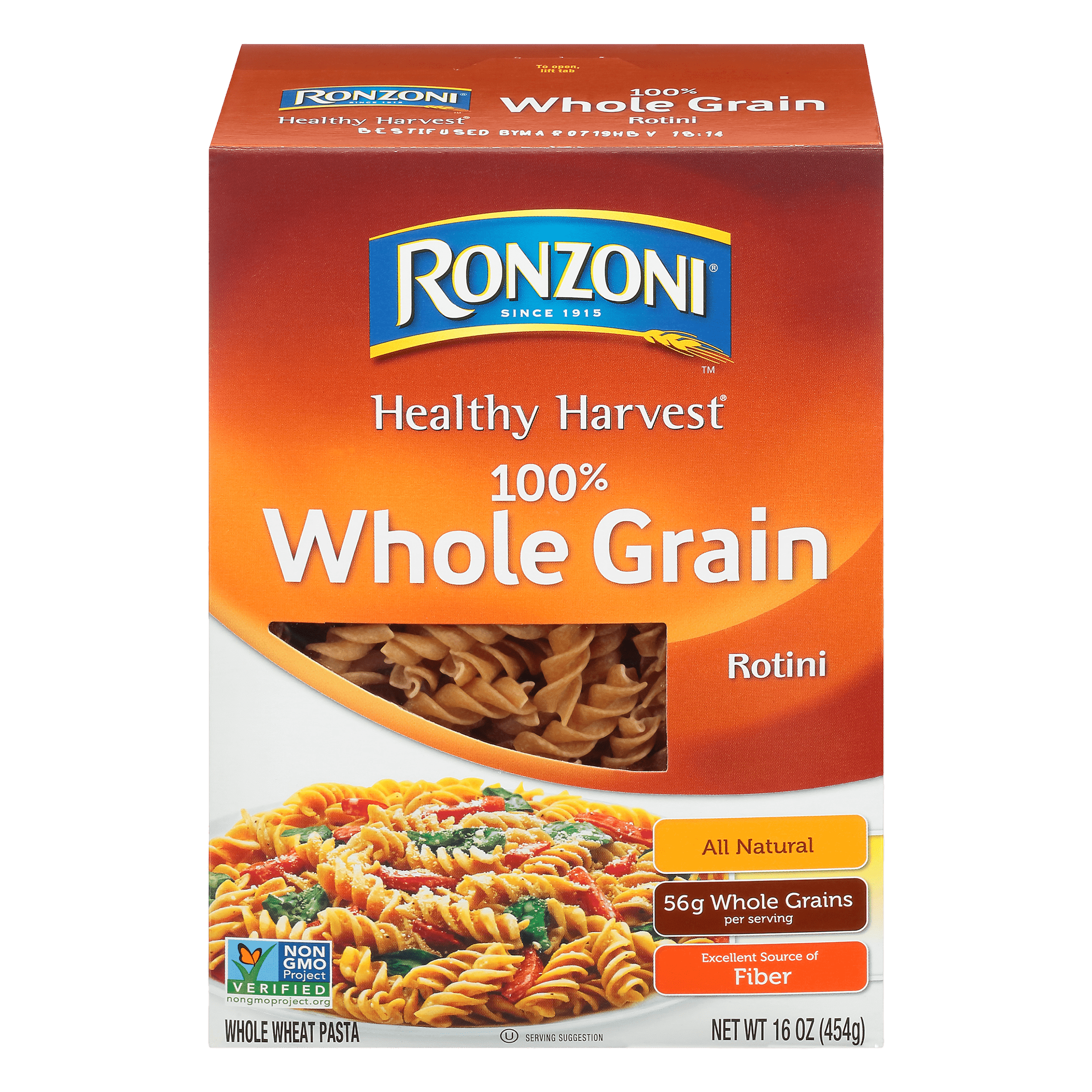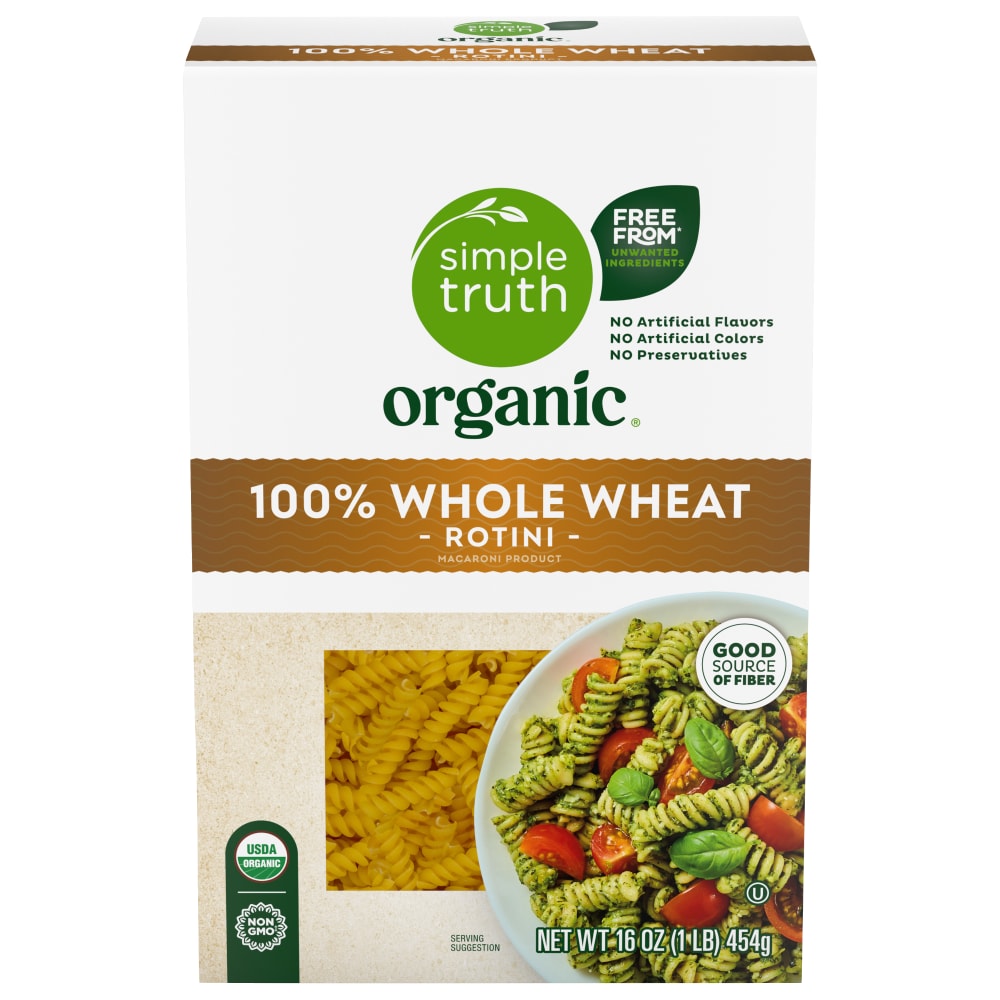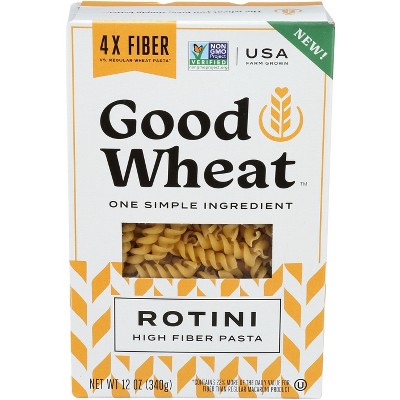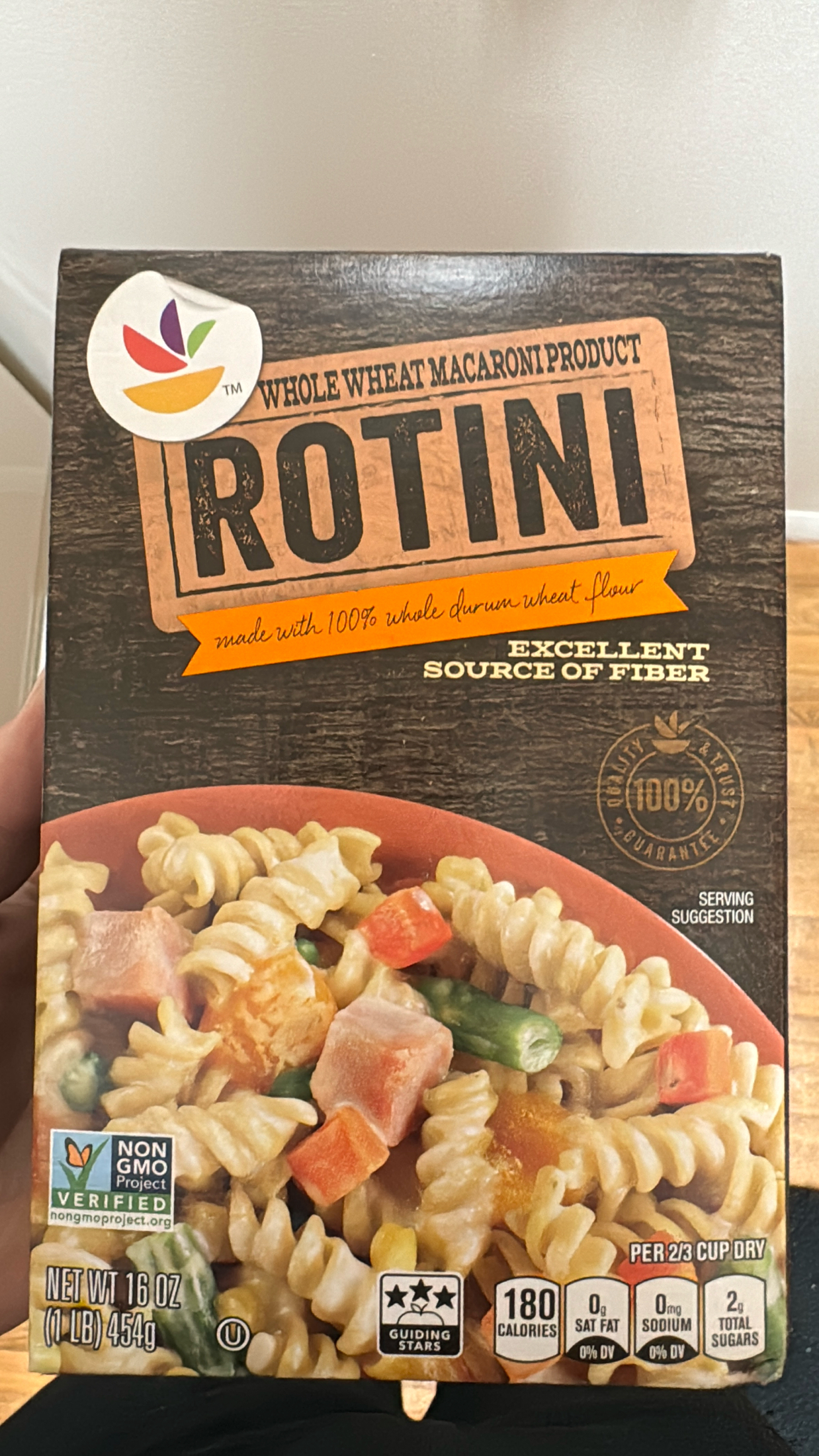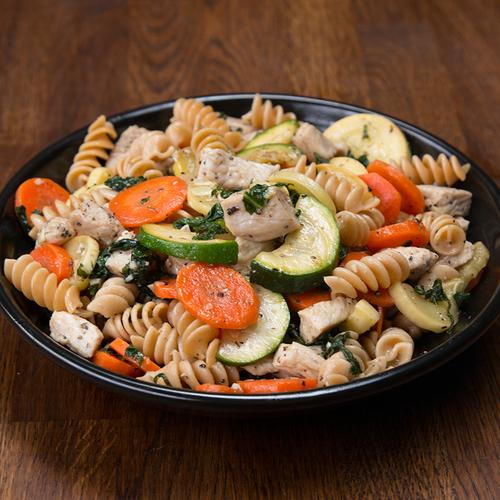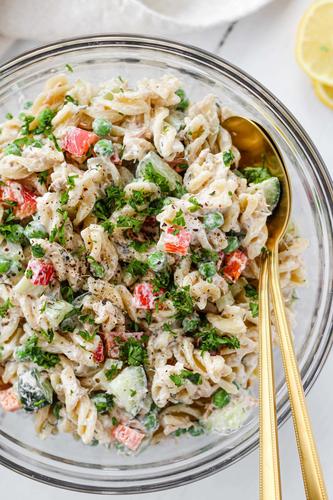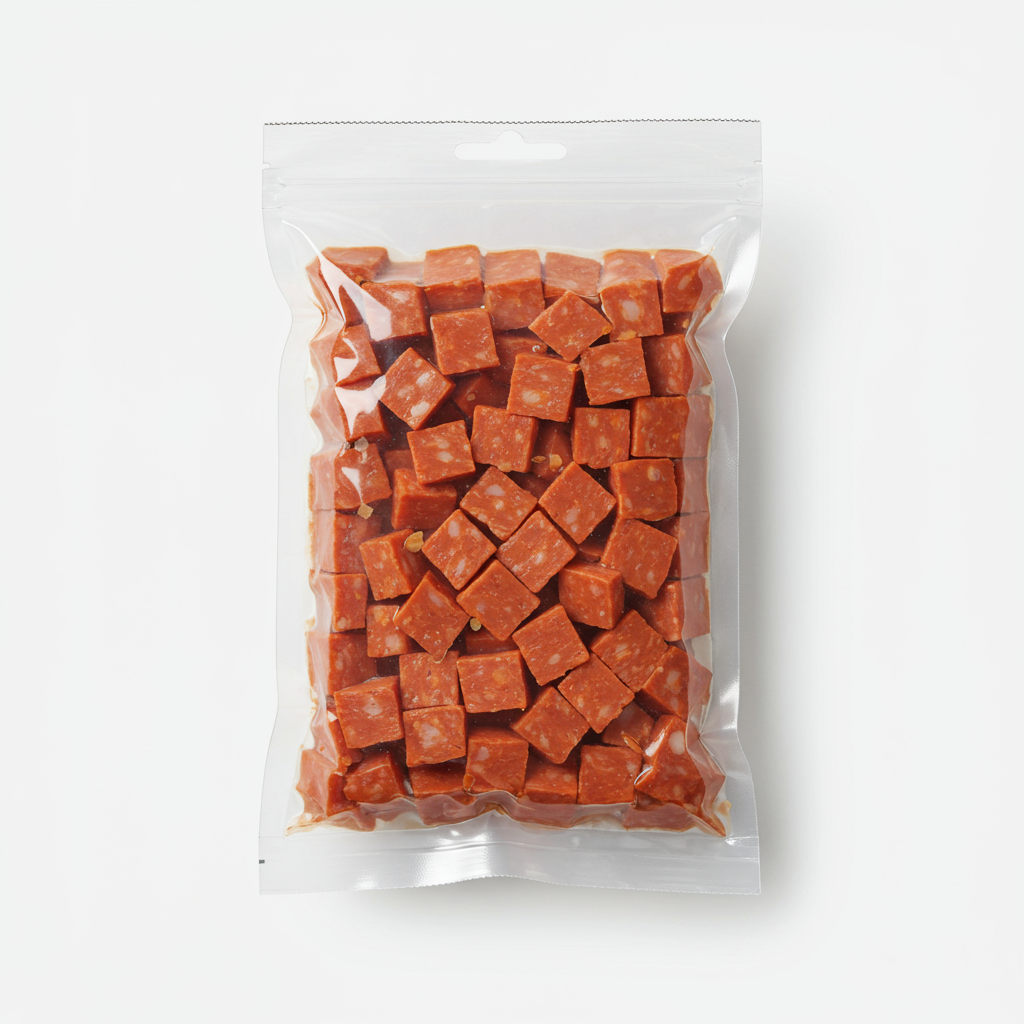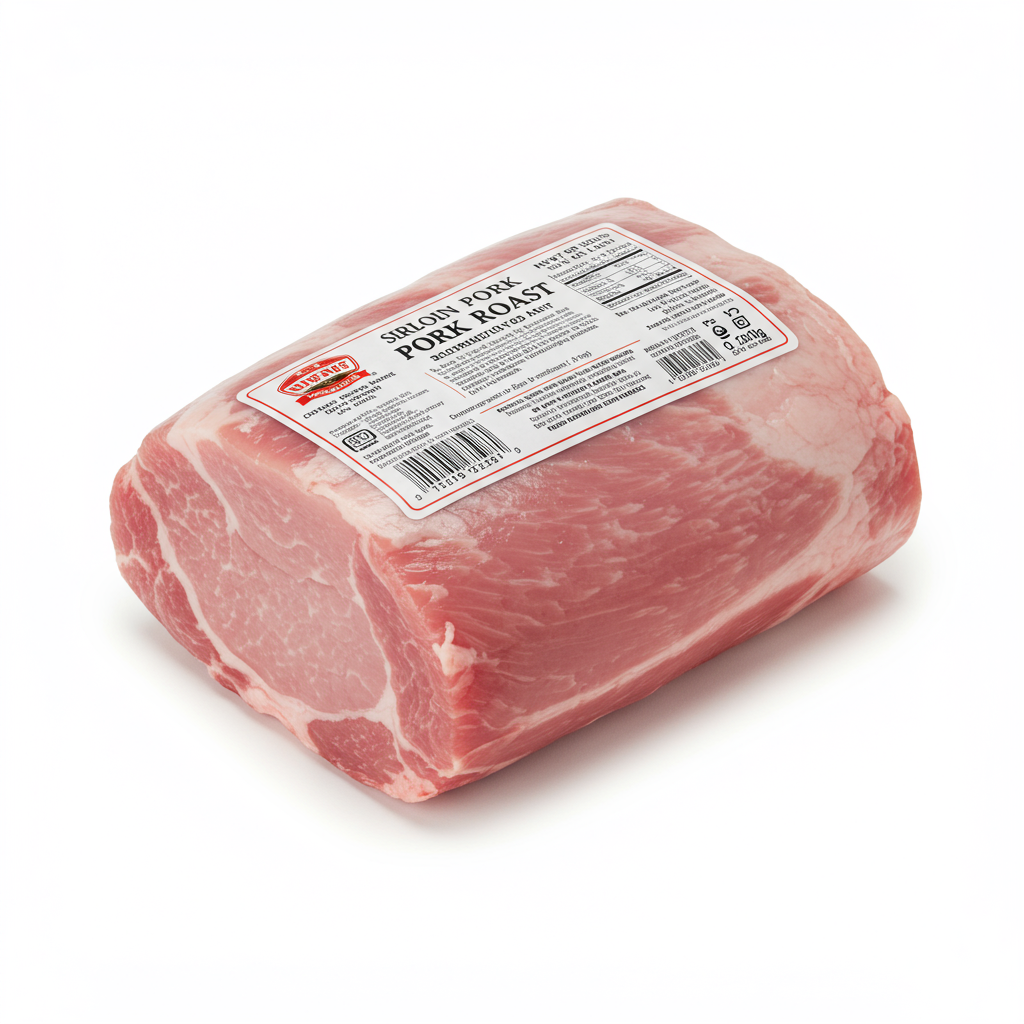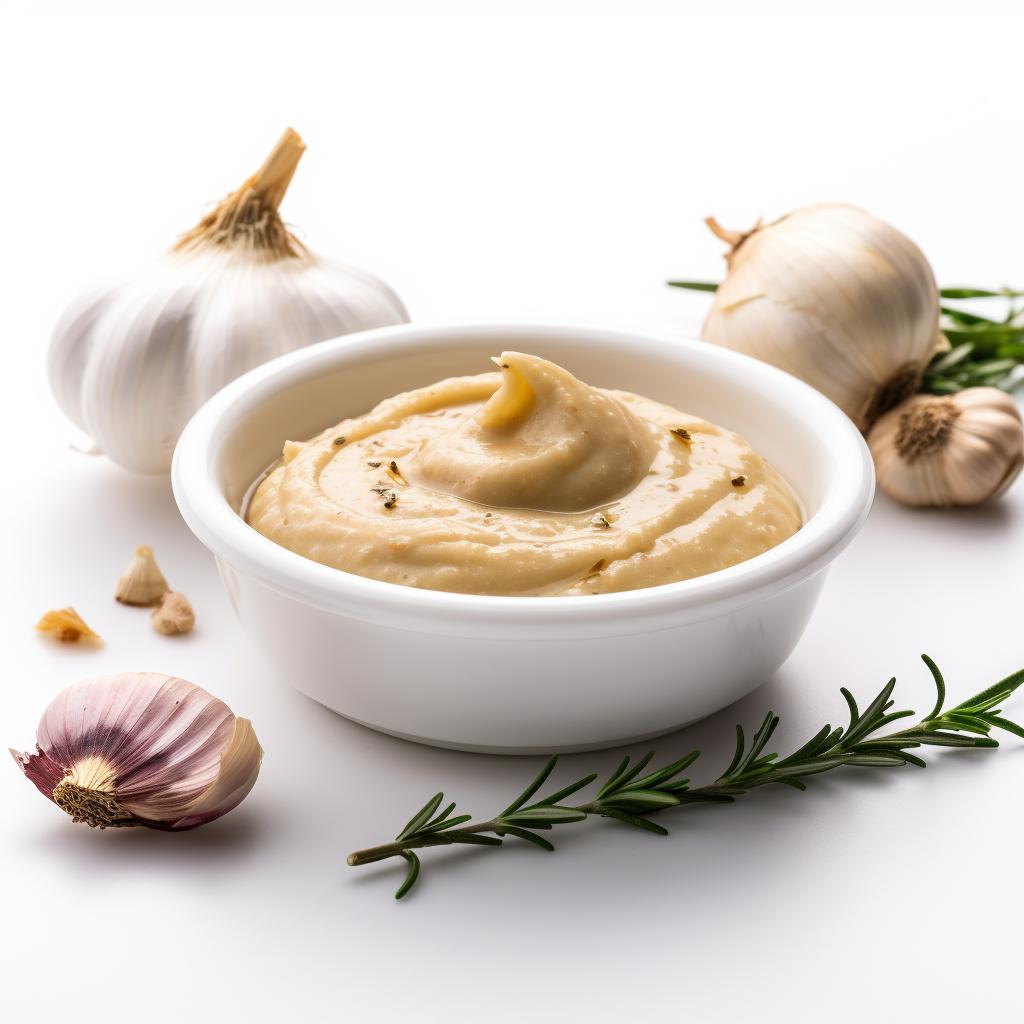MAIN DISHES
SIDE DISHES
SALADS
Whole Grain Rotini
Whole grain rotini is a type of pasta made from grinding whole wheat grains into flour, which is then mixed with water to create the dough. The dough is extruded into the helix shape that characterizes this pasta variety. Rotini's distinct spiral pattern allows it to hold onto sauces and seasonings, making it a popular choice for a wide range of dishes including pasta salads, casseroles, and pasta stir-fries.
Whole wheat varieties not only provide a nuttier, earthier taste but also offer superior nutritional benefits compared to traditional white pasta. Home cooks and health-conscious consumers alike appreciate that whole wheat rotini is high in fiber, vitamins, and minerals, making it a healthier alternative to incorporate into their meals.
84%
CARBS
2%
FAT
14%
PROTEIN
149 Whole Grain Rotini Products
Barilla Protein+ Rotini Pasta
Barilla Whole Grain Rotini Pasta
Great Value Rotini
Kroger® 100% Whole Grain Salad Rotini Pasta
Whole Wheat Rotini
Ronzoni Healthy Harvest Whole Wheat Rotini
Kroger 100% Whole Wheat Grain Macaroni Product, Rotini
Simple Truth Organic® 100% Whole Wheat Rotini Pasta
Goodwheat Pasta Wheat Rotini - Pack of 12
Rotini Whole Wheat Macaroni Product
Used In 7 Recipes
4
Creamy Chicken and Broccoli Whole Wheat Pasta Bake
3
Cheesy Chicken & Tomato Pasta Bake
4
Easy Garlic Chicken & Veggie Rotini
1,002
Meal-Prep Garlic Chicken And Veggie Pasta Recipe by Tasty
56
Easy Chicken Alfredo with Broccoli
1
Tuna Pasta Salad with Lemon Vinaigrette
2
Creamy Healthy Tuna Pasta Salad
Whole Grain Rotini Is Frequently Used With
Whole Grain Rotini FAQ
Whole wheat rotini is a type of pasta whose distinct spiral shape is great for holding sauces, making it a versatile ingredient for many dishes. Where people often go wrong with whole wheat rotini is by overcooking it, which can make it mushy and unappetizing. Cooking whole wheat rotini until it is 'al dente' (firm to the bite) is the best way to preserve its texture and allow it to hold sauce well. Maximizing flavor can be achieved by adding salt into the boiling water before cooking the pasta. Other than the usual pasta dishes, whole wheat rotini can also be used in salads, cold pasta dishes and stir fries. A little known trick when cooking any kind of pasta, not just rotini, is to reserve a cup of the pasta water before draining. The starchy water can help emulsify and thicken your sauce, making it stick better to your pasta.
How much salt should I add to the water when cooking whole wheat rotini?
Why does my whole wheat rotini taste bland?
Why does my whole wheat rotini get mushy?
Can I use whole wheat rotini for cold pasta dishes?
Does whole wheat rotini taste different from regular rotini?
How do I get my sauce to stick to my whole wheat rotini?
Can I use whole wheat rotini instead of regular rotini in my recipe?
Why is my whole wheat rotini chewy?
What dishes are best for whole wheat rotini?
How can I spice up my whole wheat rotini dish?
Expiration & Storage Tips
When does whole wheat rotini expire?
Unopened whole wheat rotini can last up to two years stored in a cool, dark place like a pantry. Once it's opened, make sure to tightly seal the remainder to keep moisture out; it should keep for about a year this way. If you've cooked leftover whole wheat rotini, keep refrigerated and consume within three to five days.
How do you tell if whole wheat rotini is bad?
Uncooked whole wheat rotini is pretty resilient, but if it develops an off smell, changes color, or shows signs of mold, it's best to toss it. If you notice a slimy or mushy texture, or a sour smell with your cooked whole wheat rotini, it's likely gone bad and should not be eaten.
Tips for storing whole wheat rotini to extend shelf life
• Always store whole wheat rotini in a cool, dark place. A pantry or kitchen cabinet away from the stove, oven, or other heat sources works great.
• After opening, secure the remaining pasta in its original packaging or transfer to an airtight container to prevent moisture and bugs from getting in.
• Cooked whole wheat rotini should be refrigerated in a sealed container within two hours of cooking. If you plan to use it within three to five days, refrigeration is enough. If not, you can freeze it to extend its shelf life. To defrost, just run it under warm water or throw directly into a pan.
EXPIRES WITHIN
19 - 29
MONTHS
Substitutes

Brown Rice & Quinoa Fusilli
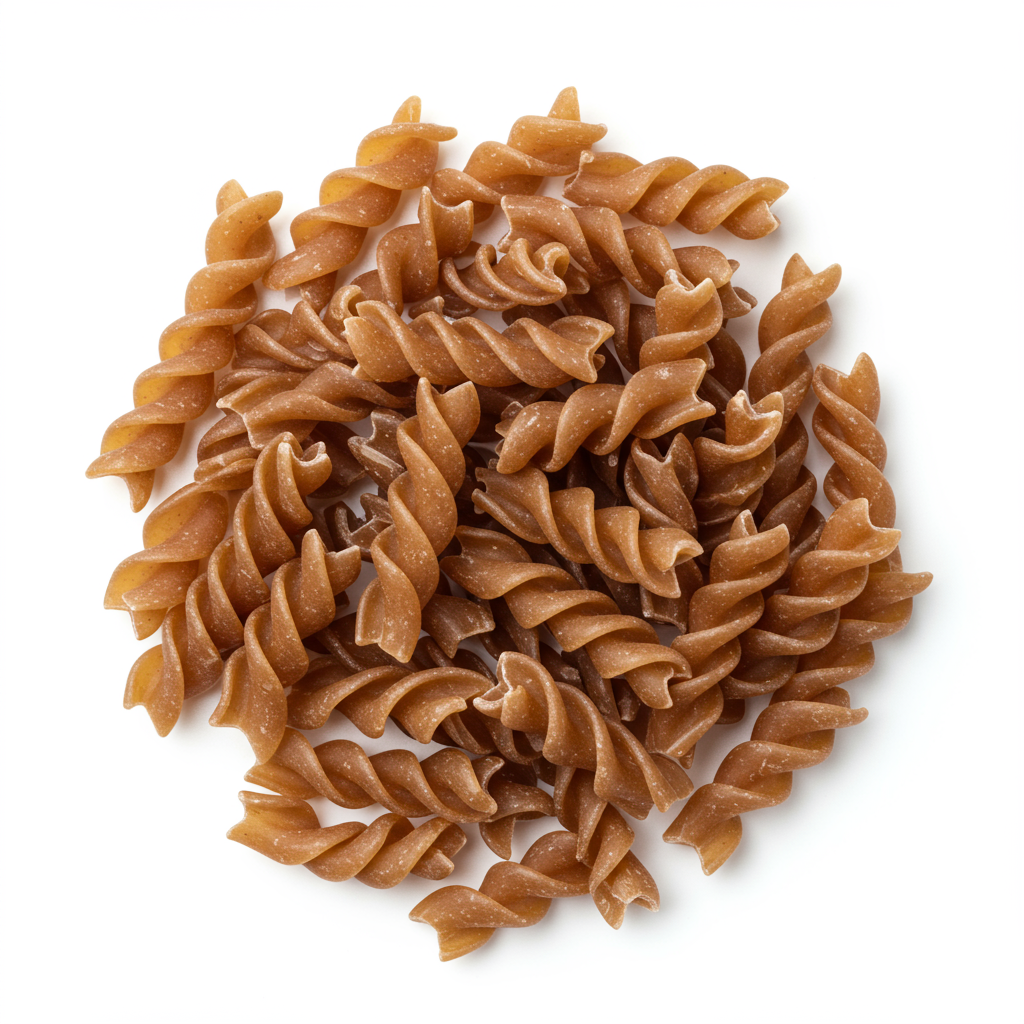
Brown Rice Fusilli Pasta
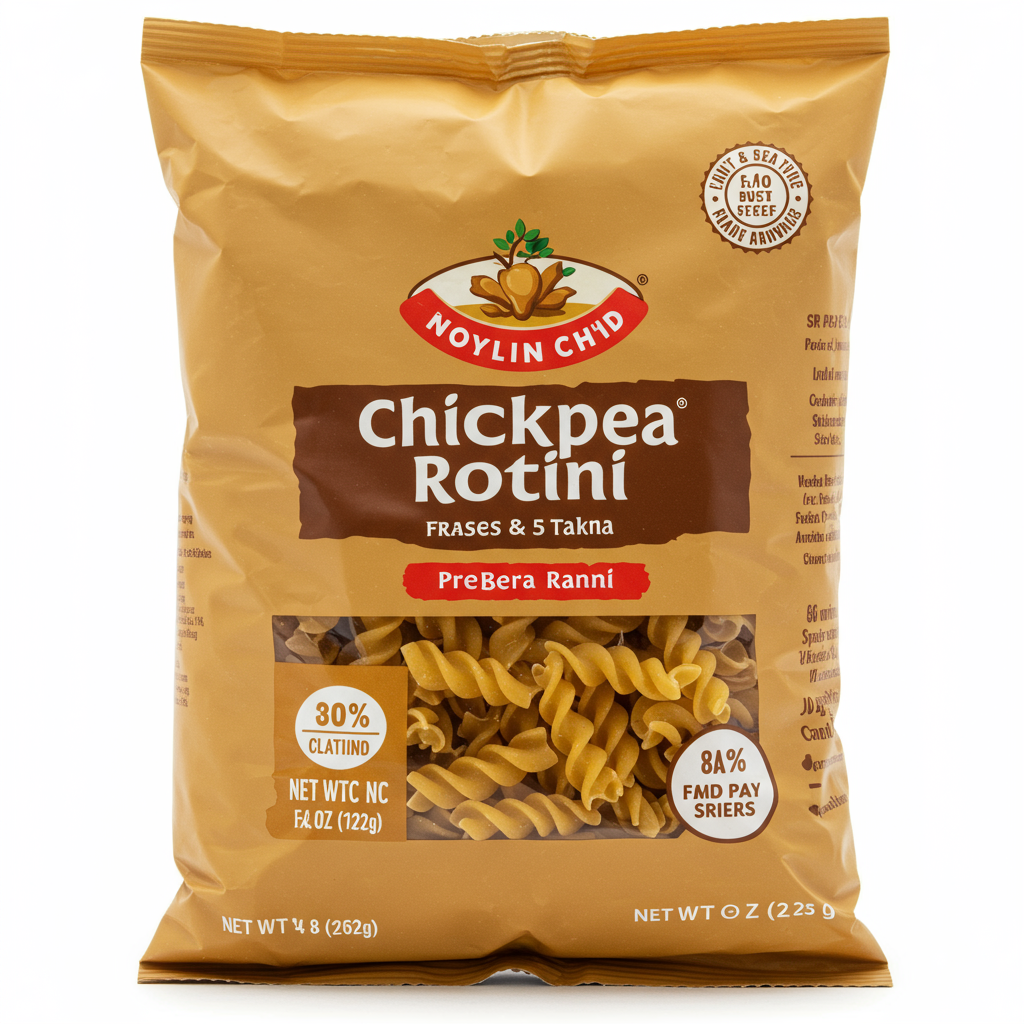
Chickpea Rotini Pasta

Gluten Free Spiral Pasta
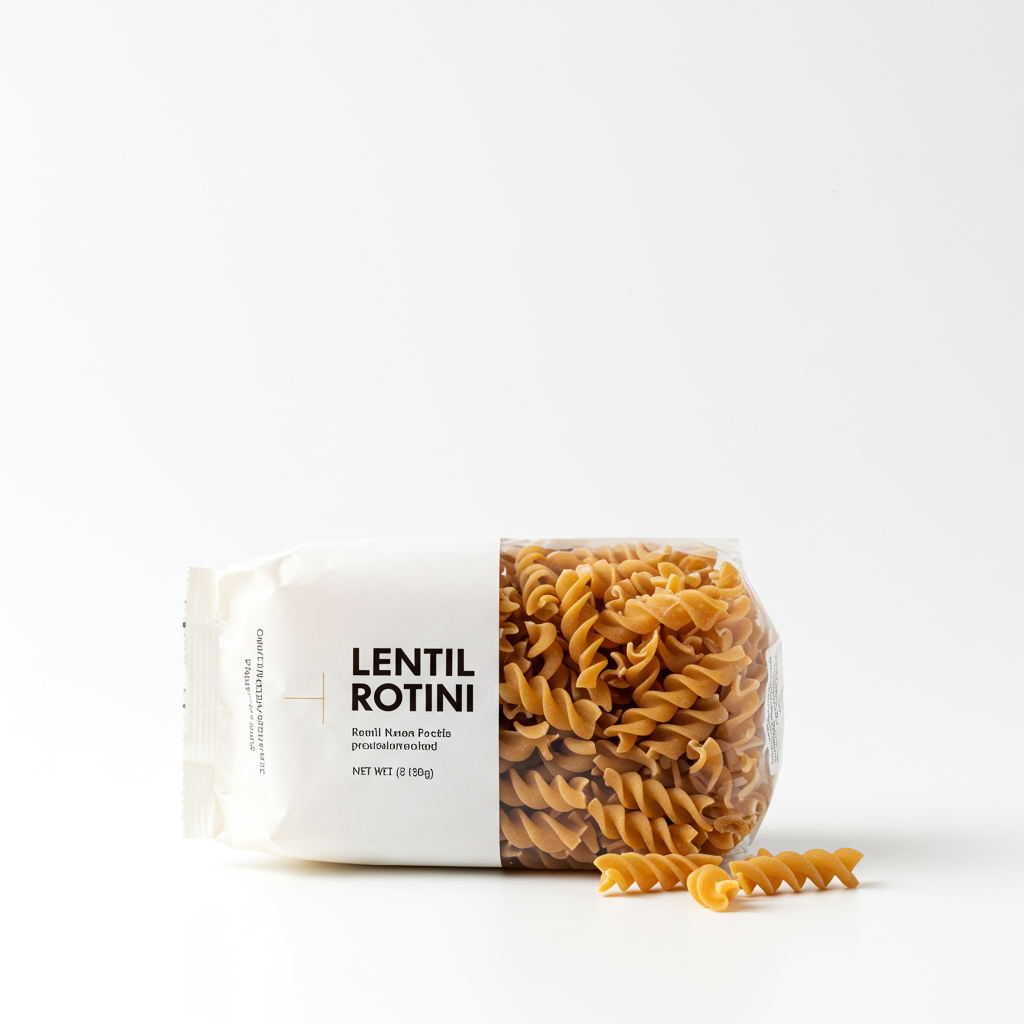
Lentil Rotini

Whole Grain Fusilli Pasta

Fusilli Pasta

Rotini

Pipette Pasta

Rotelle Pasta
See All
Health Info
Macros
87g
CARBS
2g
FAT
15g
PROTEIN
Allowed on these diets
LOW FAT
HIGH CALCIUM
VEGETARIAN
MEDITERRANEAN
VEGAN
LACTOSE FREE
Contains these allergens
WHEAT

